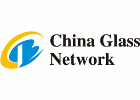Latest industry data – published by the European Container Glass Federation (FEVE) – show that the EU28 average collection for recycling rate for glass packaging grew to the record rate of 76% in 2017 (1). Most of the 30 billion collected containers go back into the batch of one of the 160 plants in Europe and make the glass packaging manufacturing industry an authentic and well-functioning Circular Economy.
According to FEVE Secretary General, Adeline Farrelly: “The high glass collection for recycling rate of 76% shows that the glass packaging circular economy works very well. Glass is a permanent material that can be endlessly recycled into new packaging, always maintaining its safety characteristics no matter how many times it’s recycled.”
Used glass is the most important resource for the bottle-to-bottle production. It results in major environmental, social and economic benefits for the value chain, for our customers, and for the end consumer. Glass recycling enables the container glass industry to dramatically reduce its environmental footprint by saving energy and raw materials, and it helps to maintain 125,000 stable and local jobs in the EU. Glass plants deliver more than half of their products within 300km and more than 70% of raw materials travel less than 300km.
However, the 76% collection for recycling rate is the average across Europe and masks quite a diverse situation. Top performers are Sweden, Belgium, Denmark, Austria, Switzerland, Slovenia with over 90% glass collection rates and just behind are other high achievers like Germany, Ireland, Italy, The Netherlands and Luxembourg with well beyond 80% rates. More needs to be done though in countries like Poland, United Kingdom, Romania, Bulgaria, Greece, Hungary and Portugal where there is a potential for growth. Each country will need its own focused and tailored strategy to ensure more and better recycling.
“We are proud that recycled glass is today our most important ingredient in glass packaging for food and beverages. In future we’d like to offer our customers even higher rates to ensure they can in turn continue to offer their customers sustainably produced products.” says Adeline Farrelly.
See FEVE Recycling Statistics 2017 published on the FEVE website www.feve.org

























